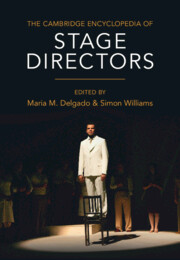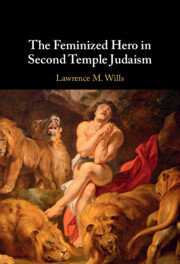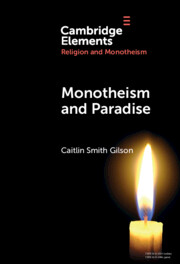Refine search
Actions for selected content:
155 results
Chapter 5 - Realism and Long-Form TV
-
- Book:
- American Narrative Realism
- Published online:
- 17 November 2025
- Print publication:
- 04 December 2025, pp 111-140
-
- Chapter
- Export citation
Chapter 5 - ‘And lat hem in this hevene blisse dwelle’
-
- Book:
- The Joy of Love in the Middle Ages
- Published online:
- 20 November 2025
- Print publication:
- 04 December 2025, pp 137-168
-
- Chapter
- Export citation
Chapter 4 - Plato’s Definition of Tragedy
-
- Book:
- Plato on Comedy and Tragedy
- Published online:
- 24 October 2025
- Print publication:
- 13 November 2025, pp 125-163
-
- Chapter
- Export citation
Chapter 7 - The Unity of Comedy and Tragedy in the Symposium
-
- Book:
- Plato on Comedy and Tragedy
- Published online:
- 24 October 2025
- Print publication:
- 13 November 2025, pp 220-247
-
- Chapter
- Export citation
Chapter 5 - Tragedy and the Best Life in the Gorgias
-
- Book:
- Plato on Comedy and Tragedy
- Published online:
- 24 October 2025
- Print publication:
- 13 November 2025, pp 164-187
-
- Chapter
- Export citation
Chapter 6 - Tragedy and Death in the Phaedo
-
- Book:
- Plato on Comedy and Tragedy
- Published online:
- 24 October 2025
- Print publication:
- 13 November 2025, pp 188-219
-
- Chapter
- Export citation

Plato on Comedy and Tragedy
- The Role of Drama in the Pursuit of Happiness
-
- Published online:
- 24 October 2025
- Print publication:
- 13 November 2025
Chapter 2 - Punishing the Transgressive Will
-
- Book:
- The Will in English Renaissance Drama
- Published online:
- 04 September 2025
- Print publication:
- 18 September 2025, pp 63-99
-
- Chapter
- Export citation
Chapter 7 - Tragedy
- from Part I - Forms and Genres
-
-
- Book:
- The Cambridge Companion to Modernist Theatre
- Published online:
- 28 August 2025
- Print publication:
- 11 September 2025, pp 126-143
-
- Chapter
- Export citation
Chapter 9 - Recovering Rape and Sexual Violence in the Peloponnesian War
-
-
- Book:
- Reassessing the Peloponnesian War
- Published online:
- 21 August 2025
- Print publication:
- 04 September 2025, pp 249-271
-
- Chapter
- Export citation
Chapter 6 - The Unity of Opposites in the Fifth Century: Tragedy and Vase-Painting
-
- Book:
- Aggregation and Antithesis in Ancient Greece
- Published online:
- 21 October 2025
- Print publication:
- 28 August 2025, pp 164-172
-
- Chapter
- Export citation
Chapter 1 - Viewing the Mēchanē
- from Part I - Greek Tragedy and Mechanical Epiphany
-
- Book:
- Technologies of the Marvellous in Ancient Greek Religion
- Published online:
- 04 September 2025
- Print publication:
- 24 July 2025, pp 35-48
-
- Chapter
-
- You have access
- Open access
- HTML
- Export citation

The Cambridge Encyclopedia of Stage Directors
-
- Published online:
- 19 June 2025
- Print publication:
- 03 July 2025
The Rousseauian roots of neorealism
-
- Journal:
- Review of International Studies , First View
- Published online by Cambridge University Press:
- 10 February 2025, pp. 1-19
-
- Article
-
- You have access
- Open access
- HTML
- Export citation

The Feminized Hero in Second Temple Judaism
-
- Published online:
- 09 January 2025
- Print publication:
- 23 January 2025
Chapter 6 - Aesthetics and the Arts in Hume’s Essays
- from Part II - Philosophy
-
-
- Book:
- Hume's <i>Essays</i>
- Published online:
- 02 January 2025
- Print publication:
- 09 January 2025, pp 108-124
-
- Chapter
- Export citation

Monotheism and Paradise
-
- Published online:
- 19 December 2024
- Print publication:
- 19 December 2024
-
- Element
- Export citation
4 - The Sense of an Ending
-
- Book:
- The Wilderness Narratives in the Hebrew Bible
- Published online:
- 12 December 2024
- Print publication:
- 19 December 2024, pp 94-117
-
- Chapter
- Export citation
3.4 - Drama I
- from History 3 - Forms
-
-
- Book:
- The New Cambridge History of Russian Literature
- Published online:
- 31 December 2024
- Print publication:
- 12 December 2024, pp 520-536
-
- Chapter
- Export citation
Chapter 20 - Comedy, Sincerity, and Hypocrisy in the Novel of Ideas
- from Part IV - 1975–Present
-
-
- Book:
- The British Novel of Ideas
- Published online:
- 05 December 2024
- Print publication:
- 12 December 2024, pp 341-360
-
- Chapter
- Export citation
